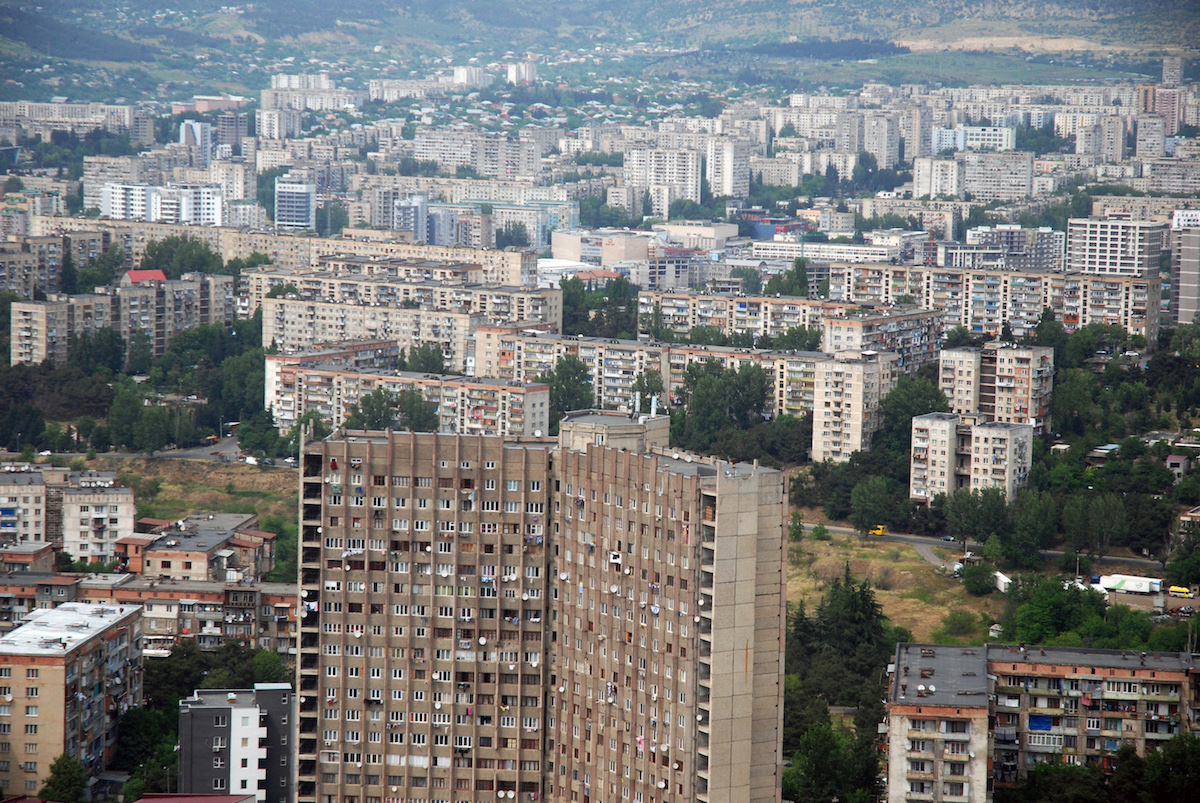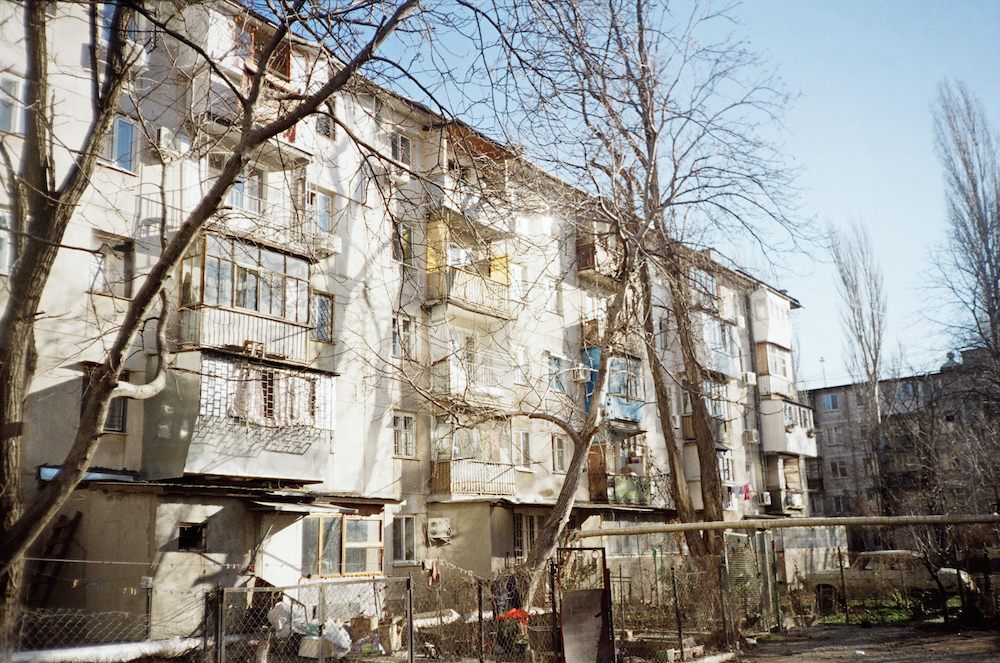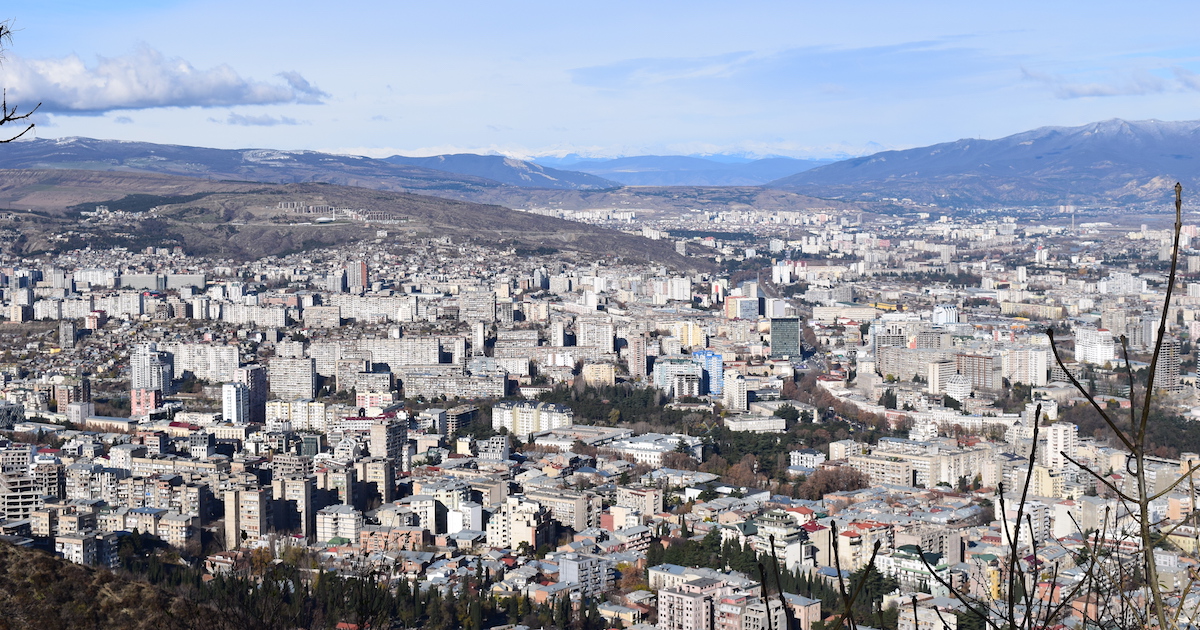What next for Eastern Europe’s mass housing heritage? Owen Hatherley on the past and future of the tower block

For the second year running, Europe’s most prestigious architecture prize has gone to a revamped mass housing project. In Eastern Europe, such tower blocks are common — but successful post-socialist regeneration is far from the norm. When it comes to mass housing, Owen Hatherley argues that East and West have much to learn from one another.
For the second year running, the Mies van der Rohe Award — the annual prize given by the Mies van der Rohe Foundation and the European Union to the finest work of architecture produced that year — has gone to a mass housing renovation project. In 2018, it went to the co-operative transformation of one block of Amsterdam’s vast Bijlmermeer estate, and in 2019, to the reconstruction — achieved without moving residents, putting their rents up, or changing their tenure — of one quarter of the vast Grand Parc estate in Bordeaux. For an award which usually goes to luxurious, “iconic” museums and suchlike to go to mass housing twice in a row is strange enough: stranger still, in both cases, the awards went to estates that were once widely seen in the press and politics as monolithic failures; the sort of places about which you might say they’re “just like Eastern Europe”.
But in Eastern Europe itself, socially and architecturally imaginative renovations of mass housing estates are few and far between. In some countries, there have been no real upgrades of these structures since they were built. Ironically, they’re sometimes fundamentally the same buildings as those that are now winning awards. Most Soviet mass housing, for instance, was based on the French Camus system, a concrete panel module that you can find all over the banlieux, which was imported to the USSR under Khrushchev. By the 1980s, it was hard to tell the difference between an East Berlin estate like Marzahn and a West Berlin equivalent like Gropiusstadt. Now, the east/west divide may be wider in these places than it was during the Cold War.
Still from Věra Chytilová’s film Panelstory (1979)
One way of understanding this difference is to realise that large panel mass housing is simply the housing where most people live in Eastern Europe: the equivalent of the Victorian terrace, the base level unit that almost everyone has at least some experience of. Many former state socialist countries have a famous film based around the familiar problems and pleasures of these places: from Eldar Ryazanov’s Irony of Fate (1976), still a cult Christmas film in Russia, Ukraine, and Belarus, based on a drunk young man accidentally going home to a version of his mass-produced flat in St Petersburg rather than Moscow; to Věra Chytilová’s riotous Panelstory (1979), where residents move into a new Prague housing estate still under construction; to Krzysztof Kieślowski’s Dekalog (1988), where high-minded Polish Catholics ponder moral quandaries in Warsaw’s enormous Ursynów estate. In the west, these estates were intended as mass housing for all, but were soon populated predominantly by working class tenants. In the east, though, Nye Bevan’s dream of doctors living next door to miners was often realised, even though the adjacent doors were in concrete corridors.
On the outskirts of Polish, Czech, and Slovak cities, a strange amalgam of state socialist buildings, social democratic urban policy, and neoliberal ownership patterns has had largely positive results
In the first years after 1989, some of the more extreme neoliberal ideologues imagined mass demolitions of panel housing, seen widely at the time as the definitive image of totalitarian homogeneity (their western roots were generally ignored). However, it was never practical to demolish what in most cities constituted at least half of all housing stock. Although there are local variations, most countries in both the Warsaw Pact and the USSR opted instead for a version of Thatcherite housing policy — offering the right to buy at a knock-down price to create a new class of property owners, while the state or the municipality retained ownership of the land the flats stood on. At first, this had little effect on the actual stock, which fell into sharp decline without any public oversight. After the decay of the 1990s, a solution of sorts was arrived at in those countries that joined the European Union after 2004, creating, within a decade, a new landscape where, as the architectural writer Maros Krivy put it, formerly grey estates transformed with great speed into “a flamboyant and patchworked mixture of yellow, orange, pink, violet and green colours.”
There has been a fair amount of snobbery directed at these chromatic transformations — usually taken as evidence of bad taste, of kitsch and a desperate desire for colour — but they’re often rather attractive, especially in the right weather, and they usually go beyond the facile: what you can see is mostly painted cement render on top of styrofoam insulation, and interiors and public spaces were frequently cleaned up as part of the project. The colours are usually chosen by residents, as a result of a complicated procurement process. The renovations are heavily subsidised by the state and, in most cases, the European Union, bringing back some of the public oversight that disappeared in the 90s. The local (private) flat owners still have to collectively bid for the funding, though, which means that in places where social links are too broken for this to take place, or where vested interests dominate, the renovations haven’t happened. In Riga, for instance, the mass estates (usually built in the 70s and 80s, and clad in a now rather fashionable “Hanseatic” red brick) have been left to rot — something which is either down to Gazprom, who would rather keep energy bills high, or to the inability of Latvian residents to organise collectively, depending on who you ask.
Nonetheless, especially on the outskirts of Polish, Czech, and Slovak (and, outside the EU, Belarusian) cities, this strange amalgam of state socialist buildings, social democratic urban policy, and neoliberal ownership patterns has had largely positive results. The housing most people live in has been made more pleasant, comfortable, and in many cases cheaper, through sharply reducing energy bills. In bigger cities, though, it has helped make estates into sellable commodities, injecting speculative capital into the newly spruce concrete monoliths. Further east, the record is much worse. In Russia, Ukraine, and Central Asia, decay and strictly private renovation dominates. Moscow has the dubious distinction of being the only big city to embark on widespread demolition of prefabricated mass housing, in Mayor Sergei Sobyanin’s widely criticised Five Storey Building Programme. In the Caucasus, the situation is more extreme. A mix of creative accounting in the Soviet 80s and the refugee crises caused by the wars of the 1990s has led to the notorious, informal second layer of often unsafe self-built flats that cling to the original structures.
Moscow has embarked on mass demolition project of Soviet-era khrushchevka mass housing. Image: Artem Svetlov under a CC licence
So, what can the Mies award tell us about the task at hand for Eastern Europe’s mass housing stock? Looking closely at the 2019 winner, Lacaton and Vassal’s Grand Parc in Bordeaux, you can see what is missing from the above examples of post-socialist decay and renovation. If the award in 2018 to NL Architects and XVW Architecture for their DeFlat Kleiburg scheme in Amsterdam was essentially for a gentrification project aimed at enlightened hipsters, the Bordeaux scheme is much more radical both in social and architectural terms. For one thing, the buildings have remained wholly public, at social rent. For another, they have actually been expanded, with glass winter gardens running along the slab blocks. (This is a feature which is in fact already common in many Russian and Ukrainian blocks of the same vintage and of the same technology, but in those cases, it tends to be added flat-by-flat by cowboy builders at the behest of individual owners.) The result, architecturally, is sleek and elegant, which can’t be said about much of this housing in the present day.
The answer as to why it is so hard to imagine this kind of regenerative scheme in Warsaw, with its profitable pastel slabs, or in Kyiv, with its crumbling panels, or in demolition-driven Moscow, should be familiar enough to British or American readers. Careful, socially conscious renovation like Lacaton and Vassal’s is just as rare in London or Chicago. Housing under neoliberal capitalism is a financial instrument or it is nothing. There are a variety of ways it can be made into one: via Ukrainian and Russian corruption and graft, or, at best, via EU-style careful management, as in Central and Eastern Europe. The 2019 Mies award, though, has gone not to a financial instrument, but to decent housing for people to live in: an idea whose time has come, again.


